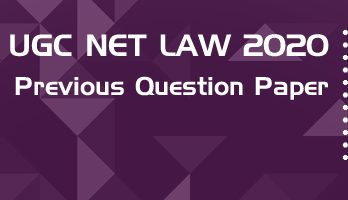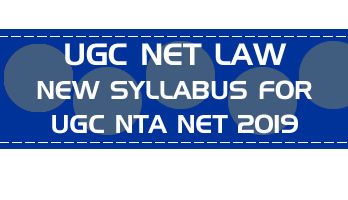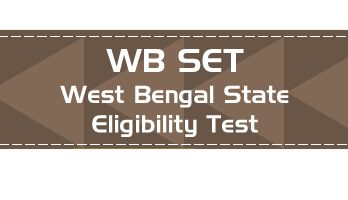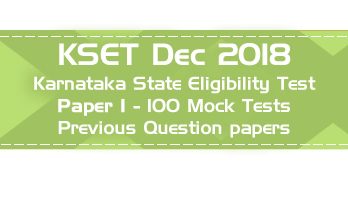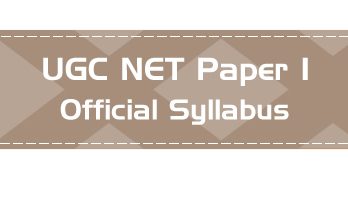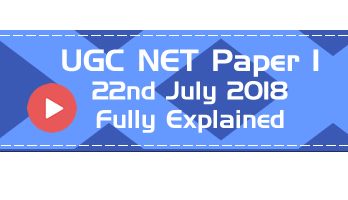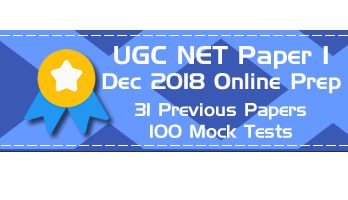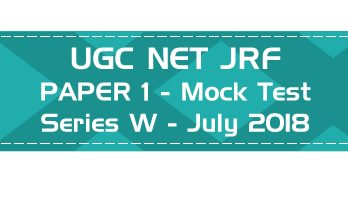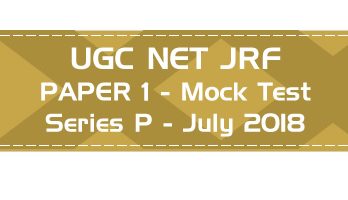- Latest Pattern Mock Tests including comprehension based questions
- Previous Question Papers with Answer Keys - From 2004 till the most recent exam
- 75 Full Length Mock Tests - New Pattern Paper II, with 100 questions each
- 50 Mini Practice Mock tests - with 25 questions each
- Unlimited Practice - New Questions in every attempt of all mocks
- Questions & Answer Choices randomly shuffled in every attempt for better practice
- Database of over 11000+ MCQs covering the entire syllabus
- Unlimited access and practice for one year from the date of purchase
- Accessible 24 x 7 via Smart-Phone browsers and Desktops
Authentic Feedback from previous LawMint users :
I got AIR 21 in CLAT PG. Thank you so much. Your mocks helped me a lot in my preparation 🙂 - Ayushi Jain
I have subscribed to your CLAT PG program and got AIR 36 in this year CLAT PG. I have also secured AIR 54 in AILET PG exam. I would like to thank you. Your mock paper really helps a lot - Shrashank Tripathi
I would like to thank you for the CLAT PG LLM COURSE. Practising mock tests there helped me in getting confidence and hence I was able to get AIR 45 in CLAT PG LLM - Akshay Awasthi
A year back, I relied on the IIT Kharagpur RGSOIPL mock test series by LawMint to prepare for my RGSOIPL entrance test. Few months back, I relied on your UGC NET Law series to prepare for UGC NET. I was the topper of the RGSOIPL entrance, and have cracked JRF in UGC NET. All thanks to LawMint - Anshuman Sahoo
"I got AIR 18 in CLAT PG and General Category rank 28 in AILET PG. I want to thank you for helping me practice well in controlled conditions from any place. It gave me a lot of confidence and I took the tests while travelling too. I also made it to IIT Kharagpur." - Vinodharani
"Lawmint has been of great help to me in securing AIR 25 in AILET PG and AIR 29 in CLAT PG examinations. The subjective and objective approach of the test series kept me up to date with the latest exam pattern." - Bhawna Nanda
"I, Nimmy Saira Zachariah joined you clat test series. I cleared AILET PG with 30th rank. Your test series were of immense help as it gave me clear idea of where my preparations stand thank you once again law mint." - Nimmy S Z
"Hey guys. Where do I start? If I thought that getting AIR 59 in Clat PG was it, then how wrong I was. With Lawmint now I have cracked UGC NET as well." - Joyanta Chakraborty
Note : Answer Keys to all Previous Question Papers published on LawMint are available to registered users of LawMint.com Online Practice Packs.
Check out all the HECI NTA NET or UGC CBSE NET Paper 1 previous question papers here : Previous Papers & Mock Tests
Note : UGC has rolled out a revised syllabus for both Papers 1 & 2 from Jan 2019 onward.
1. Which of the following is the largest source of water pollution in major rivers of India?
– Untreated sewage
– Agriculture run-off
– Unregulated small scale industries
– Religious practices
2. Sustainable development goals have specific targets to be achieved by
– 2022
– 2030
– 2040
– 2050
3. Indian government’s target of producing Solar Power by the year 2022, is
– 100 GW
– 50 GW
– 25 GW
– 100 MW
4. Assertion (A): Conserving our soil resources is critical to human survival.
Reason (R): Soil is home to many micro-organisms and contains minerals.
– Both (A)and (R) are correct and (R) is the correct explanation of (A).
– Both (A)and (R) are correct but (R) is not the correct explanation of (A).
– (A)is true and (R) is false.
– (A)is false and (R) is true.
5. World Meteorological Organization’s (WMO) objective has been to reduce the number of deaths due to hydro meteorological disasters over the decade 2010-2019 by (with reference to the decade 1994-2003)
– 25%
– 50%
– 75%
– 80%
6. __________ is a type of memory circuitry that holds the computer’s start-up routine.
– RIM (Read Initial Memory)
– RAM (Random Access Memory)
– ROM (Read Only Memory)
– Cache Memory
7. An ASCII is a character-encoding scheme that is employed by personal computers in order to represent various characters, numbers and control keys that the computer user selects on the keyboard. ASCII is an acronym for
– American Standard Code for Information Interchange
– American Standard Code for Intelligent Information
– American Standard Code for Information Integrity
– American Standard Code for Isolated Information
8. Identify the air pollutant in urban areas which irritates eyes and also respiratory tract of human beings.
– Particulate matter
– Oxides of nitrogen
– Surface ozone
– Carbon monoxide
9. Which of the following statements about the Indian political system is/are correct?
(a) The president is both Head of the State and Head of the Government.
(b) Parliament is Supreme.
(c) The Supreme Court is the guardian of the Constitution.
(d) The Directive Principles of State Policy are justiciable.
– (a), (b), (c) and (d)
– (b), (c) and (d)
– (b) and (c)
– (c) only
10. Which of the following are the fundamental duties?
(a) To respect the National Flag.
(b) To protect and improve the natural environment.
(c) For a parent to provide opportunities for education to his/her child.
(d) To protect monuments and places of national importance.
– (a), (b) and (c)
– (a), (b) and (d)
– (a), (c) and (d)
– (a), (b), (c) and (d)
11. Which of the following statements are correct in respect of Niti Aayog?
(a) It is a constitutional body.
(b) It is a statutory body.
(c) It is neither a constitutional body nor a statutory body.
(d) It is a think-tank.
– (a) and (d)
– (b) and (d)
– (c) and (d)
– (b), (c) and (d)
12. Which of the following core value among the institutions of higher education are promoted by the NAAC (National Assessment and Accreditation Council)?
(a) Contributing to national development.
(b) Fostering global competencies among the students.
(c) Inculcating a value system among students.
(d) Promoting the optimum utilization of the infrastructure.
– (b), (c) and (d)
– (a), (b) and (c)
– (a), (c) and (d)
– (a), (b), (c) and (d)
13. The best way for providing value education is through
– discussions on scriptural texts
– lecture/discourses on values
– seminars/symposia on values
– mentoring/reflective sessions on values
14. The National Judicial Appointments Commission (NJAC) has been declared unconstitutional by
– The Supreme Court of India
– The High Court
– The High Court and the Supreme Court both
– The President of India
15. Which set of learner characteristics may be considered helpful in designing effective teaching-learning systems? Select the correct alternative from the codes given below:
(i) Prior experience of learners in respect of the subject.
(ii) Interpersonal relationships of learner’s family friends.
(iii) Ability of the learners in respect of the subject.
(iv) Student’s language background.
(v) Interest of students in following the prescribed dress code.
(vi) Motivational-orientation of the students.
– (i), (ii), (iii) and (iv)
– (i), (iii), (iv) and (vi)
– (ii), (iii), (iv) and (v)
– (iii), (iv), (v) and (vi)
16. A college level assistant professor has planned his/her lectures with an intent to develop cognitive dimensions of students centered on skills of analysis and synthesis. Below, given are two sets of items Set – I consisting of levels of cognitive interchange and Set – II comprising basic requirements for promoting them. Match the two sets and indicate your answer by choosing the correct alternative from the code:
Set – I (Levels of Cognitive Interchange)
a. Memory level
b. Understanding level
c. Reflective level
Set – II (Basic requirements for promoting cognitive interchange)
i. Giving opportunity for discriminating examples and non-examples of a point.
ii. Recording the important points made during the presentations.
iii. Asking the students to discuss various items of information.
iv. Critically analyzing the points to be made and discussed.
Choose the answer corresponding to the oreder : a b c
– ii iv i
– iii iv ii
– ii i iv
– i ii iii
17. Match the items of the first set with that of the second set in respect of evaluation system. Choose the correct code:
Set – I
a. Formative evaluation
b. Summative evaluation
c. Continuous and comprehensive evaluation
d. Norm and criterion referenced tests
Set – II
i. Evaluating cognitive and co-cognitive aspects with regularity
ii. Tests and their interpretations based on a group and certain yardsticks
iii. Grading the final learning outcomes
iv. Quizzes and discussions
Choose the answer corresponding to the order : a b c d
– iv iii i ii
– i ii iii iv
– iii iv ii i
– i iii iv ii
18. Select the alternative which consists of positive factors contributing to effectiveness of teaching:
(a) Teacher’s knowledge of the subject.
(b) Teacher’s socio-economic background.
(c) Communication skill of the teacher.
(d) Teacher’s ability to please the students.
(e) Teacher’s personal contact with students.
(f) Teacher’s competence in managing and monitoring the classroom transactions.
– (b), (c) and (d)
– (c), (d) and (f)
– (b), (d) and (e)
– (a), (c) and (f)
19. The use of teaching aids is justified on the grounds of
– Attracting student’s attention in the class room.
– Minimizing indiscipline problems in the classroom.
– Optimizing learning outcomes of students.
– Effective engagement of students in learning tasks.
20. Assertion (A): The purpose of higher education is to promote critical and creative thinking abilities among students.
Reason (R): These abilities ensure job placements.
– Both (A) and (R) are true and (R) is the correct explanation of (A).
– Both (A) and (R) are true but (R) is not the correct explanation of (A).
– (A) is true and (R) is false.
– (A) is false and (R) is true.
21. In qualitative research paradigm, which of the following features may be considered critical?
– Data collection with standardised research tools.
– Sampling design with probability sample techniques.
– Data collection with bottom-up empirical evidences.
– Data gathering to take with top-down systematic evidences.
22. From the following list of statements identify the set which has negative implications for ‘research ethics’ :
(i) A researcher critically looks at the findings of another research.
(ii) Related studies are cited without proper references.
(iii) Research findings are made the basis for policy making.
(iv) Conduct of practitioner is screened in terms of reported research evidences.
(v) A research study is replicated with a view to verify the evidences from other researches.
(vi) Both policy making and policy implementing processes are regulated in terms of preliminary studies.
– (i), (ii) and (iii)
– (ii), (iii) and (iv)
– (ii), (iv) and (vi)
– (i), (iii) and (v)
23. In a research on the effect of child-rearing practices on stress-proneness of children in competing school projects, the hypothesis formulated is that ‘child rearing practices do influence stress-proneness’. At the data-analysis stage a null hypothesis is advanced to find out the tenability of research hypothesis. On the basis of the evidence available, the null hypothesis is rejected at 0.01 level of significance. What decision may be warranted in respect of the research hypothesis?
– The research hypothesis will also be rejected.
– The research hypothesis will be accepted.
– Both the research hypothesis and the null hypothesis will be rejected.
– No decision can be taken in respect of the research hypothesis.
24. A research intends to explore the effect of possible factors for the organization of effective mid-day meal interventions. Which research method will be most appropriate for this study?
– Historical method
– Descriptive survey method
– Experimental method
– Ex-post-facto method
25. Which of the following is an initial mandatory requirement for pursuing research?
– Developing a research design
– Formulating a research question
– Deciding about the data analysis procedure
– Formulating a research hypothesis
26. The format of thesis writing is the same as in
– preparation of a research paper/article
– writing of seminar presentation
– a research dissertation
– presenting a workshop/conference paper
27. Read the following passage carefully and answer the question below :
In terms of labour, for decades the relatively low cost and high quality of Japanese workers conferred considerable competitive advantage across numerous durable goods and consumer-electronics industries (eg. Machinery, automobiles, televisions, radios). Then labour-based advantages shifted to South Korea, then to Malaysia, Mexico and other nations. Today, China appears to be capitalizing best on the basic of labour, Japanese firms still remain competitive in markets for such durable goods, electronics and other products, but the labour force is no longer sufficient for competitive advantage over manufacturers in other industrializing nations. Such shifting of labour-based advantage is clearly not limited to manufacturing industries. Today a huge number of IT and service jobs are moving from Europe and North America to India, Singapore, and like countries with relatively well-educated, low-cost workforces possessing technical skills. However, as educational levels and technical skills continue to rise in other countries, India, Singapore and like nations enjoying labour-based competitive advantage today are likely to find such advantage cannot be sustained through emergence of new competitors.
In terms of capital, for centuries the days of gold coin and later even paper money restricted financial flows. Subsequently regional concentrations were formed where large banks, industries and markets coalesced. But today capital flows internationally at rapid speed. Global commerce no longer requires regional interactions among business players. Regional capital concentrations in places such as New York, London and Tokyo still persist, of course, but the capital concentrated there is no longer sufficient for competitive advantage over other capitalists distributed worldwide. Only if an organization is able to combine, integrate and apply its resources (eg. Land, labour, capital, IT) in an effective manner that is not readily imitable by competitors can such an organization enjoy competitive advantage sustainable overtime.
In a knowledge-based theory of the firm, this idea is extended to view organizational knowledge as resource with atleast the same level of power and importance as the traditional economic inputs. An organization with superior knowledge can achieve competitive advantage in markets that appreciate the application of such knowledge. Semiconductors, genetic engineering, pharmaceuticals, software, military warfare, and like knowledge-intensive competitive arenas provide both time-proven and current examples. Consider semiconductors (e. g. computer chips), which are made principally of sand and common metals, these ubiquitous and powerful electronics devices are designed within common office buildings, using commercially available tools, and fabricated within factories in many industrialized nations. Hence, land is not the key competitive recourse in the semiconductor industry.
What is required to ensure competitive advantages in specific markets?
– Access to capital
– Common office buildings
– Superior knowledge
– Common metals
28. Read the following passage carefully and answer the question below :
In terms of labour, for decades the relatively low cost and high quality of Japanese workers conferred considerable competitive advantage across numerous durable goods and consumer-electronics industries (eg. Machinery, automobiles, televisions, radios). Then labour-based advantages shifted to South Korea, then to Malaysia, Mexico and other nations. Today, China appears to be capitalizing best on the basic of labour, Japanese firms still remain competitive in markets for such durable goods, electronics and other products, but the labour force is no longer sufficient for competitive advantage over manufacturers in other industrializing nations. Such shifting of labour-based advantage is clearly not limited to manufacturing industries. Today a huge number of IT and service jobs are moving from Europe and North America to India, Singapore, and like countries with relatively well-educated, low-cost workforces possessing technical skills. However, as educational levels and technical skills continue to rise in other countries, India, Singapore and like nations enjoying labour-based competitive advantage today are likely to find such advantage cannot be sustained through emergence of new competitors.
In terms of capital, for centuries the days of gold coin and later even paper money restricted financial flows. Subsequently regional concentrations were formed where large banks, industries and markets coalesced. But today capital flows internationally at rapid speed. Global commerce no longer requires regional interactions among business players. Regional capital concentrations in places such as New York, London and Tokyo still persist, of course, but the capital concentrated there is no longer sufficient for competitive advantage over other capitalists distributed worldwide. Only if an organization is able to combine, integrate and apply its resources (eg. Land, labour, capital, IT) in an effective manner that is not readily imitable by competitors can such an organization enjoy competitive advantage sustainable overtime.
In a knowledge-based theory of the firm, this idea is extended to view organizational knowledge as resource with atleast the same level of power and importance as the traditional economic inputs. An organization with superior knowledge can achieve competitive advantage in markets that appreciate the application of such knowledge. Semiconductors, genetic engineering, pharmaceuticals, software, military warfare, and like knowledge-intensive competitive arenas provide both time-proven and current examples. Consider semiconductors (e. g. computer chips), which are made principally of sand and common metals, these ubiquitous and powerful electronics devices are designed within common office buildings, using commercially available tools, and fabricated within factories in many industrialized nations. Hence, land is not the key competitive recourse in the semiconductor industry.
The passage also mentions about the trend of
– Global financial flow
– Absence of competition in manufacturing industry
– Regionalisation of capitalists
– Organizational incompatibility
29. Read the following passage carefully and answer the question below :
In terms of labour, for decades the relatively low cost and high quality of Japanese workers conferred considerable competitive advantage across numerous durable goods and consumer-electronics industries (eg. Machinery, automobiles, televisions, radios). Then labour-based advantages shifted to South Korea, then to Malaysia, Mexico and other nations. Today, China appears to be capitalizing best on the basic of labour, Japanese firms still remain competitive in markets for such durable goods, electronics and other products, but the labour force is no longer sufficient for competitive advantage over manufacturers in other industrializing nations. Such shifting of labour-based advantage is clearly not limited to manufacturing industries. Today a huge number of IT and service jobs are moving from Europe and North America to India, Singapore, and like countries with relatively well-educated, low-cost workforces possessing technical skills. However, as educational levels and technical skills continue to rise in other countries, India, Singapore and like nations enjoying labour-based competitive advantage today are likely to find such advantage cannot be sustained through emergence of new competitors.
In terms of capital, for centuries the days of gold coin and later even paper money restricted financial flows. Subsequently regional concentrations were formed where large banks, industries and markets coalesced. But today capital flows internationally at rapid speed. Global commerce no longer requires regional interactions among business players. Regional capital concentrations in places such as New York, London and Tokyo still persist, of course, but the capital concentrated there is no longer sufficient for competitive advantage over other capitalists distributed worldwide. Only if an organization is able to combine, integrate and apply its resources (eg. Land, labour, capital, IT) in an effective manner that is not readily imitable by competitors can such an organization enjoy competitive advantage sustainable overtime.
In a knowledge-based theory of the firm, this idea is extended to view organizational knowledge as resource with atleast the same level of power and importance as the traditional economic inputs. An organization with superior knowledge can achieve competitive advantage in markets that appreciate the application of such knowledge. Semiconductors, genetic engineering, pharmaceuticals, software, military warfare, and like knowledge-intensive competitive arenas provide both time-proven and current examples. Consider semiconductors (e. g. computer chips), which are made principally of sand and common metals, these ubiquitous and powerful electronics devices are designed within common office buildings, using commercially available tools, and fabricated within factories in many industrialized nations. Hence, land is not the key competitive recourse in the semiconductor industry.
What does the author lay stress on in the passage?
– International commerce
– Labour-Intensive industries
– Capital resource management
– Knowledge-driven competitive advantage
30. Read the following passage carefully and answer the question below :
In terms of labour, for decades the relatively low cost and high quality of Japanese workers conferred considerable competitive advantage across numerous durable goods and consumer-electronics industries (eg. Machinery, automobiles, televisions, radios). Then labour-based advantages shifted to South Korea, then to Malaysia, Mexico and other nations. Today, China appears to be capitalizing best on the basic of labour, Japanese firms still remain competitive in markets for such durable goods, electronics and other products, but the labour force is no longer sufficient for competitive advantage over manufacturers in other industrializing nations. Such shifting of labour-based advantage is clearly not limited to manufacturing industries. Today a huge number of IT and service jobs are moving from Europe and North America to India, Singapore, and like countries with relatively well-educated, low-cost workforces possessing technical skills. However, as educational levels and technical skills continue to rise in other countries, India, Singapore and like nations enjoying labour-based competitive advantage today are likely to find such advantage cannot be sustained through emergence of new competitors.
In terms of capital, for centuries the days of gold coin and later even paper money restricted financial flows. Subsequently regional concentrations were formed where large banks, industries and markets coalesced. But today capital flows internationally at rapid speed. Global commerce no longer requires regional interactions among business players. Regional capital concentrations in places such as New York, London and Tokyo still persist, of course, but the capital concentrated there is no longer sufficient for competitive advantage over other capitalists distributed worldwide. Only if an organization is able to combine, integrate and apply its resources (eg. Land, labour, capital, IT) in an effective manner that is not readily imitable by competitors can such an organization enjoy competitive advantage sustainable overtime.
In a knowledge-based theory of the firm, this idea is extended to view organizational knowledge as resource with atleast the same level of power and importance as the traditional economic inputs. An organization with superior knowledge can achieve competitive advantage in markets that appreciate the application of such knowledge. Semiconductors, genetic engineering, pharmaceuticals, software, military warfare, and like knowledge-intensive competitive arenas provide both time-proven and current examples. Consider semiconductors (e. g. computer chips), which are made principally of sand and common metals, these ubiquitous and powerful electronics devices are designed within common office buildings, using commercially available tools, and fabricated within factories in many industrialized nations. Hence, land is not the key competitive recourse in the semiconductor industry.
Which country enjoyed competitive advantages in automobile industry for decades?
– South Korea
– Japan
– Mexico
– Malaysia
31. Read the following passage carefully and answer the question below :
In terms of labour, for decades the relatively low cost and high quality of Japanese workers conferred considerable competitive advantage across numerous durable goods and consumer-electronics industries (eg. Machinery, automobiles, televisions, radios). Then labour-based advantages shifted to South Korea, then to Malaysia, Mexico and other nations. Today, China appears to be capitalizing best on the basic of labour, Japanese firms still remain competitive in markets for such durable goods, electronics and other products, but the labour force is no longer sufficient for competitive advantage over manufacturers in other industrializing nations. Such shifting of labour-based advantage is clearly not limited to manufacturing industries. Today a huge number of IT and service jobs are moving from Europe and North America to India, Singapore, and like countries with relatively well-educated, low-cost workforces possessing technical skills. However, as educational levels and technical skills continue to rise in other countries, India, Singapore and like nations enjoying labour-based competitive advantage today are likely to find such advantage cannot be sustained through emergence of new competitors.
In terms of capital, for centuries the days of gold coin and later even paper money restricted financial flows. Subsequently regional concentrations were formed where large banks, industries and markets coalesced. But today capital flows internationally at rapid speed. Global commerce no longer requires regional interactions among business players. Regional capital concentrations in places such as New York, London and Tokyo still persist, of course, but the capital concentrated there is no longer sufficient for competitive advantage over other capitalists distributed worldwide. Only if an organization is able to combine, integrate and apply its resources (eg. Land, labour, capital, IT) in an effective manner that is not readily imitable by competitors can such an organization enjoy competitive advantage sustainable overtime.
In a knowledge-based theory of the firm, this idea is extended to view organizational knowledge as resource with atleast the same level of power and importance as the traditional economic inputs. An organization with superior knowledge can achieve competitive advantage in markets that appreciate the application of such knowledge. Semiconductors, genetic engineering, pharmaceuticals, software, military warfare, and like knowledge-intensive competitive arenas provide both time-proven and current examples. Consider semiconductors (e. g. computer chips), which are made principally of sand and common metals, these ubiquitous and powerful electronics devices are designed within common office buildings, using commercially available tools, and fabricated within factories in many industrialized nations. Hence, land is not the key competitive recourse in the semiconductor industry.
Why labour-based competitive advantages of India and Singapore cannot be sustained in IT and service sectors?
– Due to diminishing levels of skill.
– Due to capital-intensive technology making inroads.
– Because of new competitors.
– Because of shifting of labour-based advantage in manufacturing industries.
32. Read the following passage carefully and answer the question below :
In terms of labour, for decades the relatively low cost and high quality of Japanese workers conferred considerable competitive advantage across numerous durable goods and consumer-electronics industries (eg. Machinery, automobiles, televisions, radios). Then labour-based advantages shifted to South Korea, then to Malaysia, Mexico and other nations. Today, China appears to be capitalizing best on the basic of labour, Japanese firms still remain competitive in markets for such durable goods, electronics and other products, but the labour force is no longer sufficient for competitive advantage over manufacturers in other industrializing nations. Such shifting of labour-based advantage is clearly not limited to manufacturing industries. Today a huge number of IT and service jobs are moving from Europe and North America to India, Singapore, and like countries with relatively well-educated, low-cost workforces possessing technical skills. However, as educational levels and technical skills continue to rise in other countries, India, Singapore and like nations enjoying labour-based competitive advantage today are likely to find such advantage cannot be sustained through emergence of new competitors.
In terms of capital, for centuries the days of gold coin and later even paper money restricted financial flows. Subsequently regional concentrations were formed where large banks, industries and markets coalesced. But today capital flows internationally at rapid speed. Global commerce no longer requires regional interactions among business players. Regional capital concentrations in places such as New York, London and Tokyo still persist, of course, but the capital concentrated there is no longer sufficient for competitive advantage over other capitalists distributed worldwide. Only if an organization is able to combine, integrate and apply its resources (eg. Land, labour, capital, IT) in an effective manner that is not readily imitable by competitors can such an organization enjoy competitive advantage sustainable overtime.
In a knowledge-based theory of the firm, this idea is extended to view organizational knowledge as resource with atleast the same level of power and importance as the traditional economic inputs. An organization with superior knowledge can achieve competitive advantage in markets that appreciate the application of such knowledge. Semiconductors, genetic engineering, pharmaceuticals, software, military warfare, and like knowledge-intensive competitive arenas provide both time-proven and current examples. Consider semiconductors (e. g. computer chips), which are made principally of sand and common metals, these ubiquitous and powerful electronics devices are designed within common office buildings, using commercially available tools, and fabricated within factories in many industrialized nations. Hence, land is not the key competitive recourse in the semiconductor industry.
How can an organization enjoy competitive advantage sustainable overtime?
– Through regional capital flows.
– Through regional interactions among business players.
– By making large banks, industries and markets coalesced.
– By effective use of various instrumentalities.
33. The choice of communication partners is influenced by factors of
– Proximity, utility, loneliness
– Utility, secrecy, dissonance
– Secrecy, dissonance, deception
– Dissimilarity, dissonance, deviance
34. As a teacher, select the best option to ensure your effective presence in the classroom.
– Use of peer command
– Making aggressive statements
– Adoption of well-established posture
– Being authoritarian
35. Every communicator has to experience
– Manipulated emotions
– Anticipatory excitement
– The issue of homophiles
– Status dislocation
36. Imagine you are working in an educational institution where people are of equal status. Which method of communication is best suited and normally employed in such a context?
– Horizontal communication
– Vertical communication
– Corporate communication
– Cross communication
37. Identify the important element a teacher has to take cognizance of while addressing students in a classroom.
– Avoidance of proximity
– Voice modulation
– Repetitive pause
– Fixed posture
38. What are the barriers to effective communication?
– Moralising, being judgemental and comments of consolation.
– Dialogue, summary and self-review.
– Use of simple words, cool reaction and defensive attitude.
– Personal statements, eye contact and simple narration.
39. A person walks 10 m infront and 10 m to the right. Then every time turning to his left, he walks 5, 15 and 15 m respectively. How far is he now from his starting point?
– 20 m
– 15 m
– 10 m
– 5 m
40. A is sister of B. F is daughter of G. C is mother of B. D is father of C. E is mother of D. A is related to D as
– Grand daughter
– Daughter
– Daughter-in-law
– Sister
41. In the series AB, EDC, FGHI, ……?……, OPQRST, the missing term is
– JKLMN
– JMKNL
– NMLKJ
– NMKLJ
42. Among the following propositions two are related in such a way that one is the denial of the other. Which are those propositions?
(a) All women are equal to men
(b) Some women are equal to men
(c) Some women are not equal to men
(d) No women are equal to men
– (a) and (b)
– (a) and (d)
– (c) and (d)
– (a) and (c)
43. In certain code, SELECTION is coded as QCJCARGML. The code of AMERICANS will be
– YKCPGAYLQ
– BNFSJDBMR
– QLYAGPCKY
– YQKLCYPAG
44. In the series 3, 11, 23, 39, 59, ______ The next term will be
– 63
– 73
– 83
– 93
45. Two railway tickets from city A and B and three tickets from city A to C cost Rs.177. Three tickets from city A to B and two tickets from city A to C city Rs.173. The fare for city B from city A will be Rs.
– 25
– 27
– 30
– 33
46. Select the code, which is not correct in the context of deductive argument with two premises:
– An argument with one true premise, one false premise and a false conclusion may be valid.
– An argument with two true premises and a false conclusion may be valid.
– An argument with one true premise, one false premise and a true conclusion may be valid.
– An argument with two false premises and a false conclusion may be valid.
47. Given below two premise and four conclusions are drawn from them (taking singly or together). Select the code that states the conclusions validly drawn.
Premises:
(i) All religious persons are emotional.
(ii) Ram is a religious person.
Conclusions:
(a) Ram is emotional.
(b) All emotional persons are religious.
(c) Ram is not a non-religious person.
(d) Some religious persons are not emotional.
– (a), (b), (c) and (d)
– (a) only
– (a) and (c) only
– (b) and (c) only
48. If the proposition ‘All thieves are poor’ is false, which of the following propositions can be claimed certainly to be true?
– Some thieves are poor.
– Some thieves are not poor.
– No thief is poor.
– No poor person is a thief.
49. Consider the following statement and select the correct code stating the nature of the argument involved in it:
To suppose that the earth is the only populated world in the infinite space is as absurd as to assert that in an entire field of millet only one grain will grow.
– Astronomical
– Anthropological
– Deductive
– Analogical
50. Select the code, which is not correct about Venn diagram:
– Venn diagram represents propositions as well as classes.
– It can provide clear method of notation.
– It can be either valid or invalid.
– It can provide the direct method of testing the validity.
51. The following table shows the percentage profit (%) earned by two companies A and B during the years 2011-15.
Year | Percentage Profit | |
A | B | |
2011 | 20 | 30 |
2012 | 35 | 40 |
2013 | 45 | 35 |
2014 | 40 | 50 |
2015 | 25 | 35 |
Where, percent (%) Profit = ((Income-Expenditure)/Expenditure)x 100
If the total expenditure of the two companies was Rs.9 lakh in the year 2012 and the expenditure of A and B were in the ratio2:1, then what was the income of the company A in that year?
– Rs.9.2 lakh
– Rs.8.1 lakh
– Rs.7.2 lakh
– Rs.6.0 lakh
52. The following table shows the percentage profit (%) earned by two companies A and B during the years 2011-15.
Year | Percentage Profit | |
A | B | |
2011 | 20 | 30 |
2012 | 35 | 40 |
2013 | 45 | 35 |
2014 | 40 | 50 |
2015 | 25 | 35 |
Where, percent (%) Profit = ((Income-Expenditure)/Expenditure)x 100
What is the average percentage profit earned by the company B?
– 35%
– 42%
– 38%
– 40%
53. The following table shows the percentage profit (%) earned by two companies A and B during the years 2011-15.
Year | Percentage Profit | |
A | B | |
2011 | 20 | 30 |
2012 | 35 | 40 |
2013 | 45 | 35 |
2014 | 40 | 50 |
2015 | 25 | 35 |
Where, percent (%) Profit = ((Income-Expenditure)/Expenditure)x 100
In which year, the percentage profit earned by the company B is less than that of company A?
– 2012
– 2013
– 2014
– 2015
54. The following table shows the number of people in different age groups who responded to a survey about their favourite style of music.
Age -> | (Years) | (Years) | (Years) |
Style of Music | 15-20 | 21-30 | 31+ |
Classical | 6 | 4 | 17 |
Pop | 7 | 5 | 5 |
Rock | 6 | 12 | 14 |
Jazz | 1 | 4 | 11 |
Blues | 2 | 3 | 15 |
Hip-Hop | 9 | 3 | 4 |
Ambient | 2 | 2 | 2 |
Approximately what percentage of the total sample were aged 21-30?
– 31%
– 23%
– 25%
– 14%
55. The following table shows the number of people in different age groups who responded to a survey about their favourite style of music.
Age -> | (Years) | (Years) | (Years) |
Style of Music | 15-20 | 21-30 | 31+ |
Classical | 6 | 4 | 17 |
Pop | 7 | 5 | 5 |
Rock | 6 | 12 | 14 |
Jazz | 1 | 4 | 11 |
Blues | 2 | 3 | 15 |
Hip-Hop | 9 | 3 | 4 |
Ambient | 2 | 2 | 2 |
Approximately what percentage of the total sample indicates that Hip-Hop is their favourite style of music?
– 6%
– 8%
– 14%
– 12%
56. The following table shows the number of people in different age groups who responded to a survey about their favourite style of music.
Age -> | (Years) | (Years) | (Years) |
Style of Music | 15-20 | 21-30 | 31+ |
Classical | 6 | 4 | 17 |
Pop | 7 | 5 | 5 |
Rock | 6 | 12 | 14 |
Jazz | 1 | 4 | 11 |
Blues | 2 | 3 | 15 |
Hip-Hop | 9 | 3 | 4 |
Ambient | 2 | 2 | 2 |
What percentage of respondents aged 31+ indicated a favourite style other than classical music?
– 64%
– 60%
– 75%
– 50%
57. An unsolicited e-mail message sent to many recipient at once is a
– Worm
– Virus
– Threat
– Spam
58. The statement “the study, design, development, implementation, support or management of computer-based information systems, particularly software applications and computer Hardware” refers to
– Information Technology (IT)
– Information and Collaborative Technology (ICT)
– Information and Data Technology (IDT)
– Artificial Intelligence (AI)
59. If the binary equivalent of the decimal number 48 is 110000, then the binary equivalent of the decimal number 51 is given by
– 110011
– 110010
– 110001
– 110100
60. The process of copying files to a CD-ROM is known as
– Burning
– Zipping
– Digitizing
– Ripping
- Latest Pattern Mock Tests including comprehension based questions
- Previous Question Papers with Answer Keys - From 2004 till the most recent exam
- 75 Full Length Mock Tests - New Pattern Paper II, with 100 questions each
- 50 Mini Practice Mock tests - with 25 questions each
- Unlimited Practice - New Questions in every attempt of all mocks
- Questions & Answer Choices randomly shuffled in every attempt for better practice
- Database of over 11000+ MCQs covering the entire syllabus
- Unlimited access and practice for one year from the date of purchase
- Accessible 24 x 7 via Smart-Phone browsers and Desktops
Authentic Feedback from previous LawMint users :
I got AIR 21 in CLAT PG. Thank you so much. Your mocks helped me a lot in my preparation 🙂 - Ayushi Jain
I have subscribed to your CLAT PG program and got AIR 36 in this year CLAT PG. I have also secured AIR 54 in AILET PG exam. I would like to thank you. Your mock paper really helps a lot - Shrashank Tripathi
I would like to thank you for the CLAT PG LLM COURSE. Practising mock tests there helped me in getting confidence and hence I was able to get AIR 45 in CLAT PG LLM - Akshay Awasthi
A year back, I relied on the IIT Kharagpur RGSOIPL mock test series by LawMint to prepare for my RGSOIPL entrance test. Few months back, I relied on your UGC NET Law series to prepare for UGC NET. I was the topper of the RGSOIPL entrance, and have cracked JRF in UGC NET. All thanks to LawMint - Anshuman Sahoo
"I got AIR 18 in CLAT PG and General Category rank 28 in AILET PG. I want to thank you for helping me practice well in controlled conditions from any place. It gave me a lot of confidence and I took the tests while travelling too. I also made it to IIT Kharagpur." - Vinodharani
"Lawmint has been of great help to me in securing AIR 25 in AILET PG and AIR 29 in CLAT PG examinations. The subjective and objective approach of the test series kept me up to date with the latest exam pattern." - Bhawna Nanda
"I, Nimmy Saira Zachariah joined you clat test series. I cleared AILET PG with 30th rank. Your test series were of immense help as it gave me clear idea of where my preparations stand thank you once again law mint." - Nimmy S Z
"Hey guys. Where do I start? If I thought that getting AIR 59 in Clat PG was it, then how wrong I was. With Lawmint now I have cracked UGC NET as well." - Joyanta Chakraborty
Note : Answer Keys to all Previous Question Papers published on LawMint are available to registered users of our Online Practice Packs.
Check out all the HECI NTA NET or UGC CBSE NET Paper 1 previous question papers here : Previous Papers & Mock Tests


